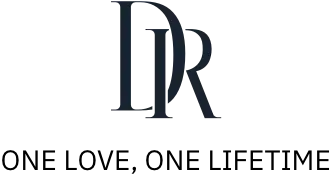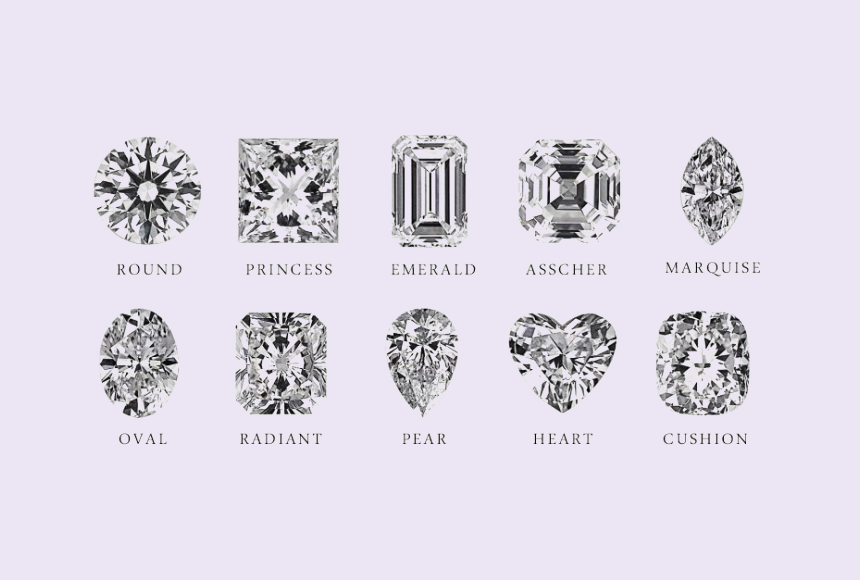What is A Diamond Cut?
Sep 26, 2023
"A Diamond is Forever" describes its indestructible physical properties, but it also reflects the arduous human effort. Before being cut and polished, rough diamonds are dull and lackluster. It is the exquisite art of diamond cut that gives it the perfect proportions, angles, and facets, allowing it to exhibit brilliance and fire that can truly be called eternal. So, what exactly is diamond cutting and its grading? How are diamonds cut, and what are the common types of diamond cuts? Darry Ring will answer all your questions in this article.
What is A Diamond Cut?
Diamond cut is one of the 4Cs of diamonds, alongside color, clarity, and carat weight. It does not refer to a specific shape of a diamond, but rather the craftsmanship involved in shaping a diamond. The cutting process is complex and generally includes diamond analysis, cleaving, polishing, and quality inspection.
A high-quality diamond cut lies in the proportions, symmetry, and polish of its facets. And a skillfully cut diamond can maximize light reflection, showcasing exceptional fire and brilliance. This is why diamond cutting is so important and influential on the price of engagement rings and wedding rings.

Common Types of Diamond Cuts
The earliest written records of diamond cutting can be traced back to 11th-century India. By the early 14th century, the technique spread to Europe from Venice. Over time, several categories emerged, including the brilliant cut, step cut, mixed cut, and rose cut. However, the rose cut is too traditional to be rarely used today, so it is not considered a common type of diamond cut.
Brilliant Cut
The brilliant cut is the most popular current facet arrangement, made of triangular and diamond-shaped facets. Many diamond shapes, like round, oval, marquise, pear, and heart shapes are all brilliant cuts.

Step Cut
The step diamond cut refers to a diamond whose facets are arranged to form parallel facets to each other, similar to a set of stairs. The step cut style emphasizes the color and clarity of the diamond and is mainly used in rectangular diamond cuts, such as emerald cut diamonds, asscher cut diamonds.

Mixed Cut
The mixed cut refers to a combination of elements from the brilliant cut and step cut styles, ensuring the weight from the step cut while enjoying the optics of the brilliant cut. This is considered a very popular diamond cut, and both cushion cut diamonds and radiant cut diamonds follow this type.

Key Parts of a Cut Diamond
Although there are different types of diamond cuts, the basic parts of each diamond are generally the same, consisting of the following five parts: the table, crown, girdle, pavilion, and culet.

● Table: The table is the largest flat facet on the top of a diamond. It is the primary entrance for light into diamonds. Its size and proportion affect the diamond's brilliance and fire.
● Crown: The crown is the area between the table and the girdle, consisting of multiple facets. It is responsible for refracting and reflecting incoming light, creating the diamond's fire.
● Girdle: The girdle is the middle part of the diamond, the edge between the crown and the pavilion. As the "waistline" of the diamond, it is the thinnest part and provides structural support for the cut.
● Pavilion: The pavilion is the bottom part of the diamond below the girdle. Composed of multiple facets, it mainly serves to refract light that passes through the diamond and reflect it back upward to create the sparkling effect.
● Culet: The culet is the very bottom tip of the pavilion, typically a small flat surface or point. It helps improve the diamond's structural stability and its small design prevents interference with light reflection.
How Is Diamond Cut Graded
When being cut, diamonds are sent to reputable authorities such as the Gemological Institute of America (GIA) for grading. The GIA inspects the diamond's brightness, fire, scintillation, symmetry, and polish, either manually or with precision instruments. Based on the results, diamonds are classified into the following cut grades.

Excellent: Perfect proportions with excellent brightness and fire. Almost 100% of the light is reflected from the top of the diamond.
Very Good: The cut and light reflection are nearly perfect. Most light is reflected through the top, with minimal leakage barely noticeable to the eye.
Good: Slightly off proportions, with reduced brightness and fire. Some light leaks from the sides or bottom of the diamond.
Fair: Poor proportions, dull appearance, and reduced light reflection, but still considered a high-quality diamond.
Poor: Imbalanced proportions, no fire, with a significant amount of light leaking from the sides or bottom of the diamond.

Tip:
The American Gem Society (AGS) also has its own diamond cut grading system, using a scale from 1 to 10:
0-1: Excellent
2: Very Good
3-4: Good
5-7: Fair
8-10: Poor
FAQs About Diamond Cuts
How are diamonds cut?
After being formed deep within the Earth under high temperature and pressure, and then mined, a diamond generally undergoes five main steps before it is considered completely cut: planning, cutting, grinding, polishing, and inspection.
Step 1. Determine the optimal cutting plan;
Step 2. Cleavage or saw the rough diamond;
Step 3. Roughly grind the diamond into shape;
Step 4. Polish the diamond with diamond abrasives;
Step 5. Inspect for flaws and weigh the diamond.
Which diamond cut sparkles the most?
The round brilliant cut is generally considered the most sparkling diamond cut. With precisely calculated and arranged 57 to 58 facets, it can maximize the capture and reflection of light to creating dazzling fire, brilliance, and scintillation, making the diamond appear radiant.
Related Articles
A Guide to Exclusive and Patent Diamond Cut by Darry Ring
 8784 / Sep 19, 2023
8784 / Sep 19, 2023Based on the heart cut and round brilliant cut, Darry Ring has re-imagined them with incredible techniques into Heart in Heart Diamond and Star of Love Diamond.
Learn More >
A Full Guide to 10 Common Diamond Ring Shapes
 13344 / Sep 25, 2023
13344 / Sep 25, 2023The 10 common diamond shapes include round, oval, marquise, pear, princess cut, cushion cut, emerald, radiant, asscher and heart. Click to learn more.
Learn More >
4Cs of Diamonds: All You Should Know
 13887 / Oct 12, 2023
13887 / Oct 12, 20234Cs of diamonds refers to cut, color, clarity and carat, which are coined by GIA to assess the quality of a diamond. Learn diamond 4cs to get a brilliant ring.
Learn More >







